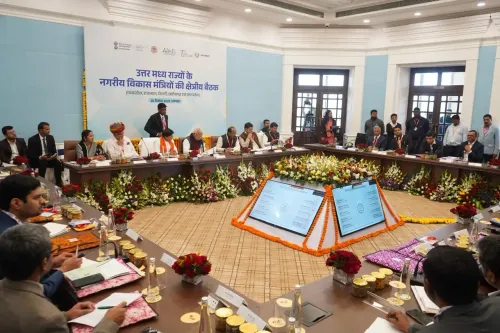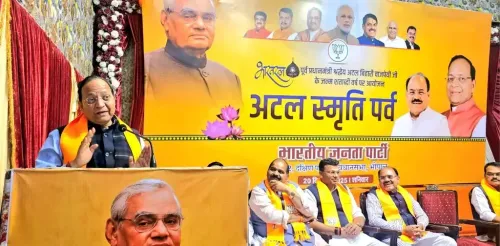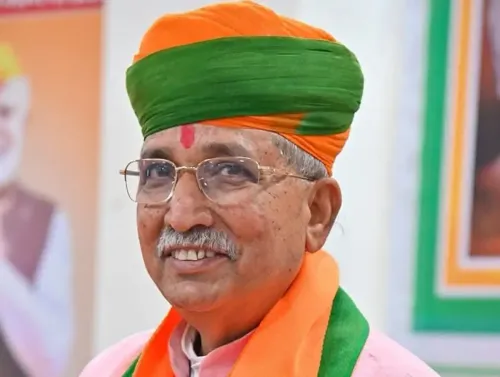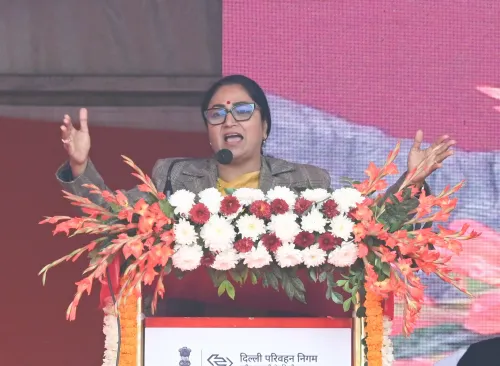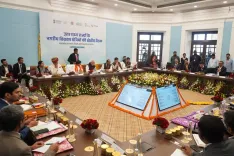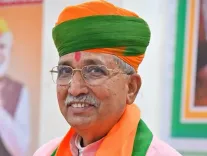Will India's Natural Gas Consumption Hit 103 bcm by 2030?
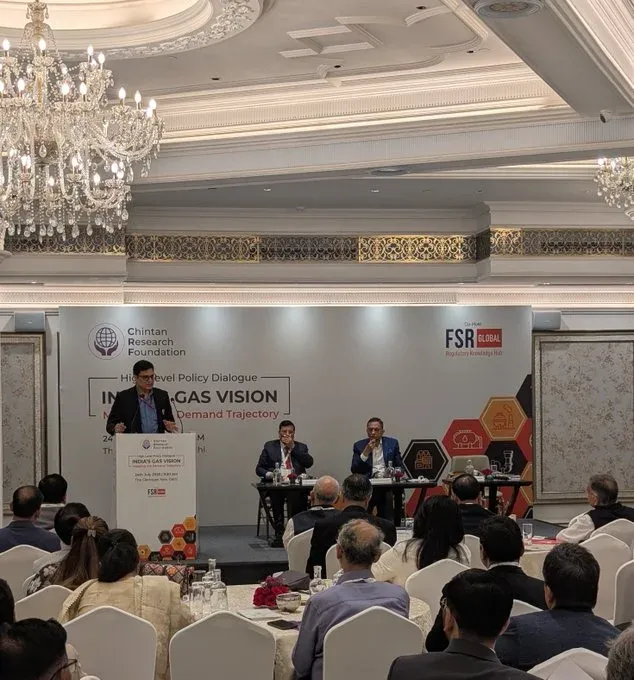
Synopsis
Key Takeaways
- Projected consumption: 103 bcm by 2030.
- Potential growth: Demand could rise to 120 bcm with policy support.
- Net-zero commitment: India aims for net-zero emissions by 2070.
- Current share: Gas comprises 6.8% of the energy mix, below the 15% target.
- Challenges ahead: Addressing infrastructure and policy reforms is crucial.
New Delhi, July 24 (NationPress) The total consumption of natural gas in India is projected to reach 103 billion cubic meters (bcm) annually by 2030, reflecting nearly a 60% surge from current figures, as disclosed by a senior government official on Thursday.
During an event hosted by the Chintan Research Foundation (CRF), Praveen Mal Khanooja, Additional Secretary of the Ministry of Petroleum and Natural Gas, stated that with enhanced policy support (including expedited CGD rollout, LNG integration in transportation, and increased utilization of gas-fired power plants), demand could escalate to 120 bcm per year by 2030, nearing South America's current consumption levels.
India has pledged to achieve net-zero emissions by 2070. A vital aspect of this transition is utilizing gas as a bridging fuel, facilitating a gradual shift from carbon-intensive fuels like coal to a low-carbon future.
Globally recognized for its lower carbon and particulate emissions, gas is viewed as a secure fossil fuel aiding the energy transition. Despite the emergence of alternatives like green hydrogen, compressed biogas, and coal-bed methane, India continues to rely predominantly on regasified LNG to enhance its gas share in the energy mix,” remarked Khanooja.
The current share of gas in India's primary energy mix stands at 6.8%, significantly below the 15% target established for 2030. Recent analyses, including insights from the IEA's ‘India Gas Market Report’, indicate that under standard conditions, India might only reach an 8-9% share by 2030.
To substantially boost gas consumption and approach even a 10% share in the energy mix, India must tackle critical challenges. The Ministry of Petroleum and Natural Gas released a revised demand forecast for the 'India Gas Vision' initiative, highlighting rapid growth across essential sectors driven by infrastructure expansion and policy reforms.
Suresh P. Manglani, Executive Director and CEO of Adani Total Gas Limited (ATGL), emphasized the need to observe China's strategies closely.
“A visit there clearly shows how aggressively China promotes LNG for transportation, especially for trucks and long-haul freight. If India is committed to moving away from high-speed diesel (HSD), we must contemplate similar approaches. Even with an incremental demand of 70 to 200 million cubic meters of LNG and establishing around 300 LNG stations across 30 to 35 logistics hubs, it would still only cater to the conventional demand segment,” highlighted Manglani.
“However, we must look beyond this. We should actively promote entrepreneurship focused on non-conventional applications of natural gas, whether in industrial clusters, remote areas, or emerging sectors. Numerous opportunities already exist across the nation,” he stressed.
The implementation of GST has already enabled India to evolve into a single, unified market.
“Now, we need to leverage that momentum to enhance transportation, boost logistics efficiency, and create a more business-friendly environment that ultimately benefits both the economy and the end consumer,” Manglani added.
Rajesh Kumar Mediratta, Managing Director and CEO of Indian Gas Exchange (IGX), stated the need to establish a robust, self-sustaining gas market.
“India has the potential to emerge as one of the largest demand centers in Asia—comparable to, or even surpassing, nations like Japan and South Korea. With this level of demand, we should be able to negotiate global contracts with greater confidence, on our own terms, rather than relying heavily on intermediaries or spot markets,” he emphasized.


